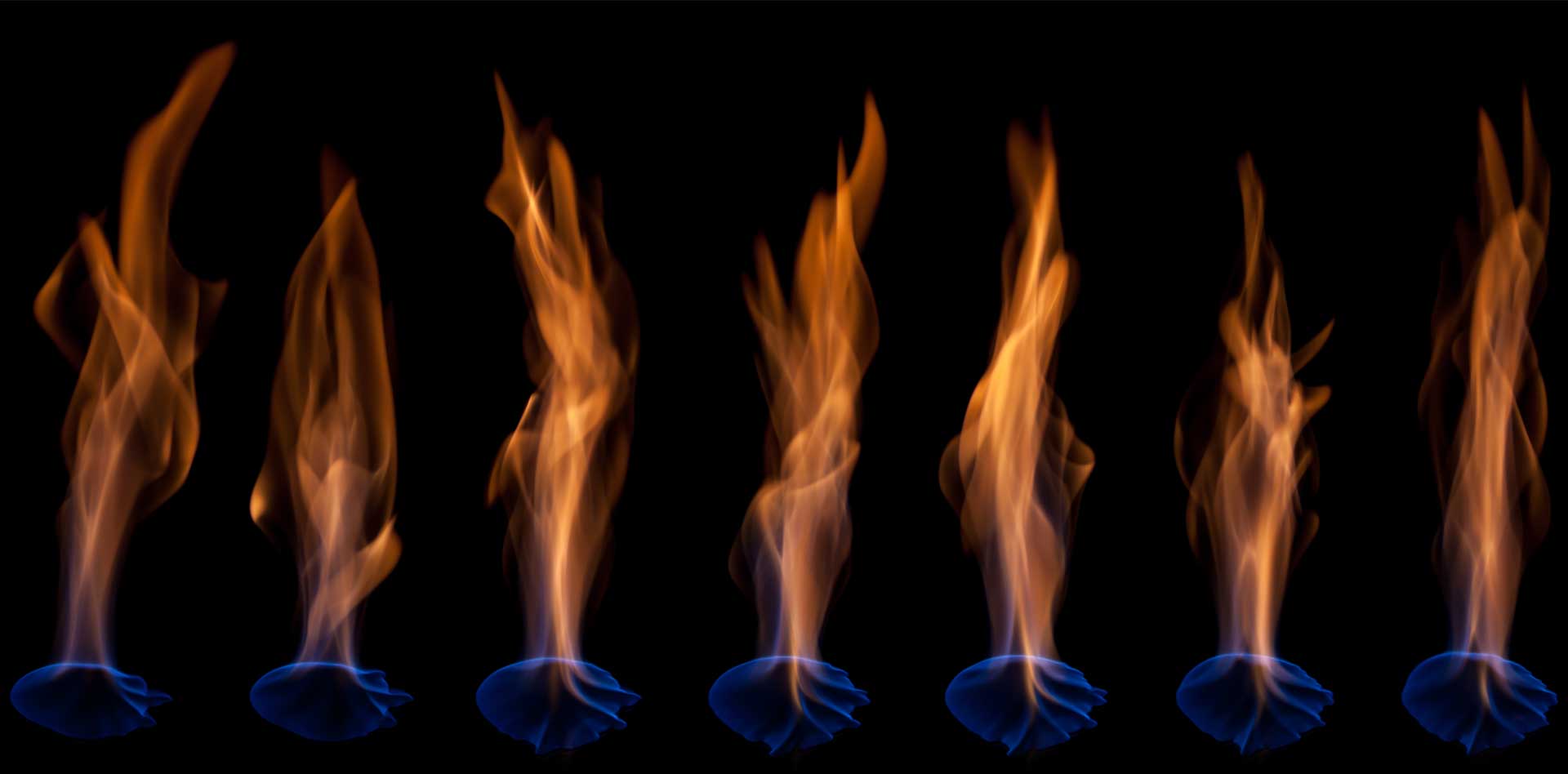Search
Hazardous Locations: From Davy Lamp to Flameproof Equipment

Working near flammable gases, vapors, or combustible dusts has always had its dangers. Picture the early 19th century miner deep underground with his candle on a stick in front, peering into the depths of the tunnel ahead.
In May 1812 at the Felling Mine near Gateshead in the United Kingdom, 92 men and boys burned to death or suffocated in an awful disaster when a flame ignited ‘firedamp’ gases in the mine. Something good came out of that tragedy that begins a line of development which branches to the Classification of Hazardous Locations as well as to design of protection methods for equipment used in flammable/ combustible atmospheres. That good thing? There was an approach by ‘The Society for Preventing Accidents in Coal Mines’ to a renowned scientist of the day, one Sir Humphrey Davy. Yes, that’s the very same Sir Humphry Davy that gave his name to the ‘Davy lamp’. We’re going to take a look at the Davy lamp in this article, but first let’s give a little context from today’s world of Process Safety.
Classification of Hazardous Locations
If you have flammable gases or vapors, flammable liquids, combustible dusts, or ignitable lint, fibers or flyings in your facility, you’ll surely agree that it makes great sense to know what they are, exactly where they are, and how often they are to be found there. If you don’t know these things then there would be little to stop someone inadvertently introducing an ignition source and with it, risk of fire or explosion.
Introducing the concept of Hazardous Locations and their classification….
Hazardous Area Classification is an approach that allows you to systematically identify if and where your flammable atmospheres can occur, determine the extent and likelihood of occurrence of flammable atmospheres, and classify each location as either hazardous or non-hazardous (Unclassified) to help you select and install electrical equipment that is designed for safe use in each location. Additionally, in locations where combustible/explosible powders are handled/ processed, the amount (quantity and/or thickness) and extent of dust accumulations on various surfaces are also evaluated.
Strategy
The strategy employed on process plant today by our process safety specialists follows the basic principles set out below:
- Classify Hazardous Areas by identifying locations of release/presence of flammable atmosphere and understanding flammability/ combustibility characteristics of hazardous materials present, their likelihood, extent, duration, and sensitivity to ignition by electrical spark and hot surfaces,
- Look how these flammable atmospheres can be eliminated or controlled,
- Select, install, and maintain electrical equipment that is specifically designed, listed and labeled to be suitable for use in the classified hazardous areas,
We have a separate web article that explains how classification of Hazardous Locations work but in summary, Hazardous Locations are classified in 3 ways. They are classified according to TYPE of flammable atmosphere present, the CONDITION under which they are expected to be present and the NATURE of the flammable materials present.
- Type – flammable gases/ vapors, combustible dusts, and fibers and flyings,
- Condition – present under normal conditions or abnormal conditions,
- Nature – Grouping according to materials ignition temperature, explosion pressure and other flammable characteristics,
At Stonehouse we have specialists that visit our client’s facilities to review existing Hazardous Area Classifications, type of materials handled, materials inventories, and process equipment. We’ll also examine electrical equipment and wiring that is installed to check suitability for use in its Hazardous Location; and our laboratories undertake test work on material flammability to establish ignition temperature, explosion pressure and more.
The Davy Lamp story
In an underground mine, hazardous gases can permeate from the earth and into the tunnels through which miners enter and through which their coal or other product is extracted.
Flammable gases: There are a number of flammable gases found underground which are collectively known as ‘firedamp’, of which methane is usually a major component. Methane is flammable in concentrations between 5% and 17% by volume when mixed with air; below 5% the mixture is too lean to support combustion and above 17% the concentration is too fuel-rich to ignite. It is flammable ‘firedamp’- air mixtures that have been responsible for thousands of deaths of miners over the years through fires and explosions, including the Felling 1812 explosion we mentioned above.
Toxic/ oxygen displacing gas atmosphere: There are also other gases found underground that are hazardous to health including carbon dioxide and carbon monoxide. Asphyxiation has taken the lives of many miners over the years. As you may know, at the time of the Felling disaster, there was already a tried and tested way of looking for the presence of carbon dioxide that involved taking a canary (bird) in a cage down the mine. The high metabolism of this tiny bird was such that it would meet its end before the accompanying human would succumb.
The primary rule of early 19th century mining: Canary falls off its perch – evacuate the mine quickly!
The Challenge: The challenge for Sir Humphry Davy was to find a way of detecting these various gases without causing an explosion and to provide warning before poisoning or asphyxiation set in. His invention, which built on the work of others before him, was remarkably simple and very effective. He showed that a flame enclosed inside a metal mesh cage would change in appearance in the presence of different gases. The flame would burn blue, higher and more brightly if a flammable gas was present. It would also dim and eventually extinguish in the presence of carbon dioxide. In fact, as we mentioned above, the extinguishment of a methane-air mixture certainly occurs when displacing carbon dioxide reduces oxygen levels to 5%, but even below 17% oxygen, changes in the flame become evident. Fortunately, life is still supported at 17% oxygen, allowing an opportunity for miners to again evacuate the mine.
It’s worth pointing out here that the really clever thing here was that a flame inside a metal mesh cage could not pass through the cage to ignite any flammable atmosphere outside the cage. We understand this with today’s knowledge by seeing the mesh as a flame arrestor; flammable gas can pass through the mesh to burn inside the cage, but the mesh holes are too small to allow a flame to propagate though to the outside. You can take your candle down the mine with you, without risk of it igniting any flammable gases that might be down there, so long as it is inside a metal cage with a sufficiently small mesh size.
Protection of Electrical Equipment for use in Hazardous Locations
Modern plant today, of course, relies on electricity to power and manage many aspects of its processing operations. Much of that equipment can get hot and/ or produce sparks. The science and engineering solutions for preventing such equipment from igniting flammable or combustible materials that could be present during normal and/or foreseeable abnormal conditions has developed enormously and indeed there are several distinct ways of achieving this today. But one of those ways still relies on the safe gap principle upon which the Davy lamp was built. Namely equipment, sometimes referred to as explosion-proof (US) or flameproof (IEC) equipment. If an explosion were to occur inside such equipment, perhaps due to ingress of a flammable material and then its ignition by electrical sparks, the equipment enclosure will contain the arc/flame/explosion and any flame front would be cooled to such an extent that it would not escape its enclosure. Just like the Davy lamp.
Modern electrical equipment for use in hazardous locations can be designed in other ways to operate safely instead of using the principles of safe gap. It could, for example, be designed to prevent ignition by limiting the energy of the ignition source (e.g., intrinsically safe – a common method of protection for control circuits), to prevent any flammable atmosphere contacting sparking parts (e.g., equipment purging/ pressurization) and others. All these being alternatives to explosion proof (or flameproof) method.
In summary
It’s been over 200 years since Sir Humphry Davy produced his Davy lamp. The Davy lamp is an example of process instrumentation that today we understand employs the concept of ‘flameproof’ as a means of protection, providing a way of taking an ignition source (a flame in this case) into a potentially flammable atmosphere.
The classification of Hazardous Locations in process safety today is key in controlling the risks introduced when electrical equipment is used in flammable/ combustible atmospheres. Once Hazardous Locations are classified, it is then possible to correctly select appropriately protected electrical equipment for use in those areas. Several different protection techniques are now available for electrical equipment, one of which is the same ‘safe gap’ idea upon which the Davy lamp relied, all those years ago.
Hazardous Area Classification also finds wider use in process safety since once a Hazardous Area has been classified to determine likelihood and extent of a flammable atmosphere, this classification can also be used to manage other sources of ignition such as mechanical sparks, impact sparks, hot surfaces, and static electricity.

Get in touch
To learn more about our expertise and services in dust explosion prevention & mitigation, call us at +1 609 455 0001 or email us at [email protected] today.
We also offer tailored virtual and in-company process safety training programs on Dust Explosions, Static Electricity and HAC (Hazardous Area Classification) and more. Find further information here.









